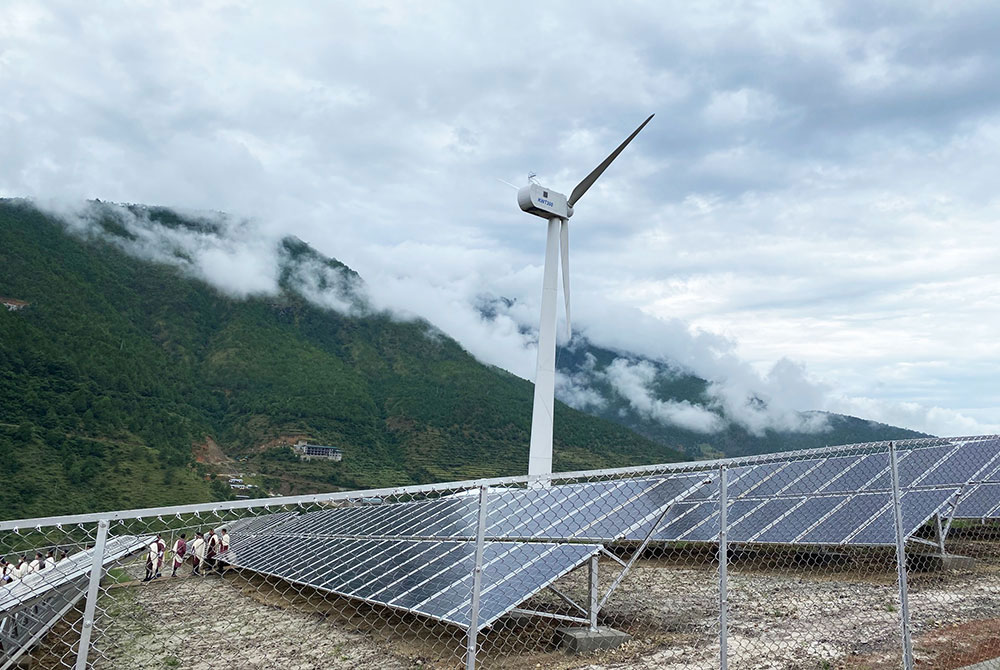
To diversify energy and empower rural households, the Department of Energy (DoE) is preparing to install three-kilowatt (Kw) grid-tied solar photovoltaic (PV) systems in 304 households in 11 villages across three dzongkhags—Lhuntse, Pemagatshel, and Dagana—where households can sell surplus energy.
The USD three million project is part of the Alternative Renewable Energy Pilot Project, funded by the Japan Fund for Prosperous and Resilient Asia and the Pacific, which is being administered by the Asian Development Bank.
What is a grid-tied solar PV system?
In the grid-tied solar PV system, electricity is fed in a transmission line so that solar and hydropower energy can complement each other when solar energy is in short supply.
“Villages and households were identified from the assessment of poorest villages and houses according to certain criteria such as multidimensional poverty index, accessibility to the nearest road point, and national grid, among others,” said Tshering Tashi, executive engineer with DoE.
“The project has a strong socio-economic impact in improving rural lives,” said the director of DoE, Karma P Dorji. “The beneficiaries will also be provided with household equipment that runs on renewable energy.”
The pilot project’s principal aim is to supplement hydropower energy with solar energy because the energy not consumed from solar power energy can be fed to main grid where anyone could use, Karma P Dorji added. “It is important to diversify energy because the country imports energy during the lean season.”
According to the import record of electricity between January 1 and February 2 this year, Bhutan purchased 208.41 million units of electricity, worth Nu 984.1 million. Bhutan’s energy exports fell in 2022 when compared to previous years. The country exported electricity worth Nu 22.48 billion (B) in 2022, and Nu 24.44B in 2021 and Nu 27.52B in 2020.
DoE has installed 276.7 kW solar power system. Nationally, about 700 kW solar power systems have been installed. The country has the potential to generate 1.2-gigawatt of solar power energy.
The 304 households, on average, consume 1,004 Kw per hour (KwH) energy in a year and pay Nu 88 per month and Nu 1,051 per year. The three Kw solar PV system is expected to generate 3925.63 KwH in a year.
The rural households get 100 units of electricity free.
Tshering Tashi said that the sale of solar energy from these households is expected to generate at least seven percent of their annual income. “We are in discussion with Bhutan Electricity Authority (BEA) to fix the tariff of solar energy for these 304 households.”
On average, the solar energy tariff for these households in the first 10 years is Nu 3.19 and Nu 1.92 for the next 11 to 20 years, according to an initial assessment from the department. Tshering Tashi said that the tariff rate could change during finalisation with BEA.
Karma P Dorji said that the revenue-generating system not only empowers the producer but also refers to the user as a prosumer, as they served both as a producer and a consumer. “This system involves transferring the ownership of solar energy to households, thereby empowering them.”
The pilot project is expected to complete by the end of 2025.












